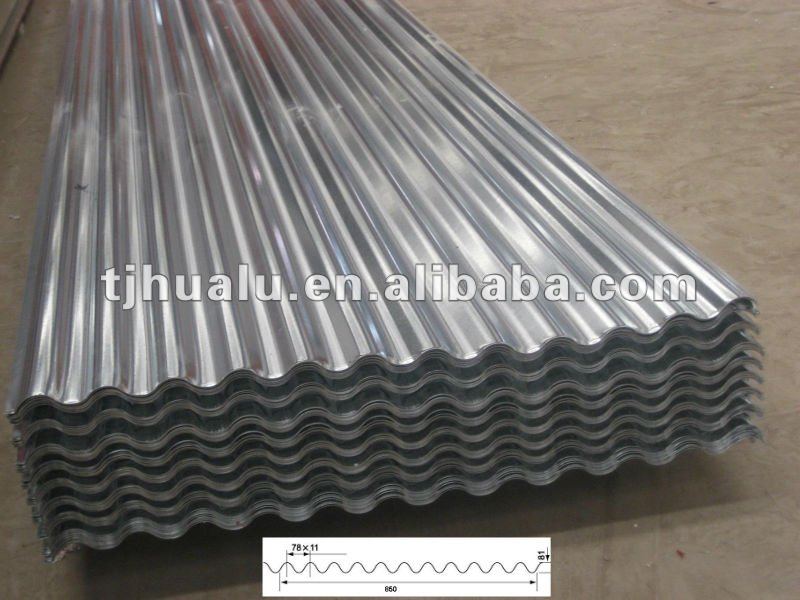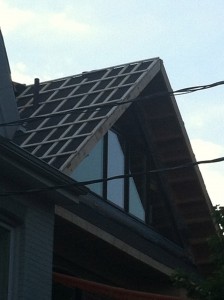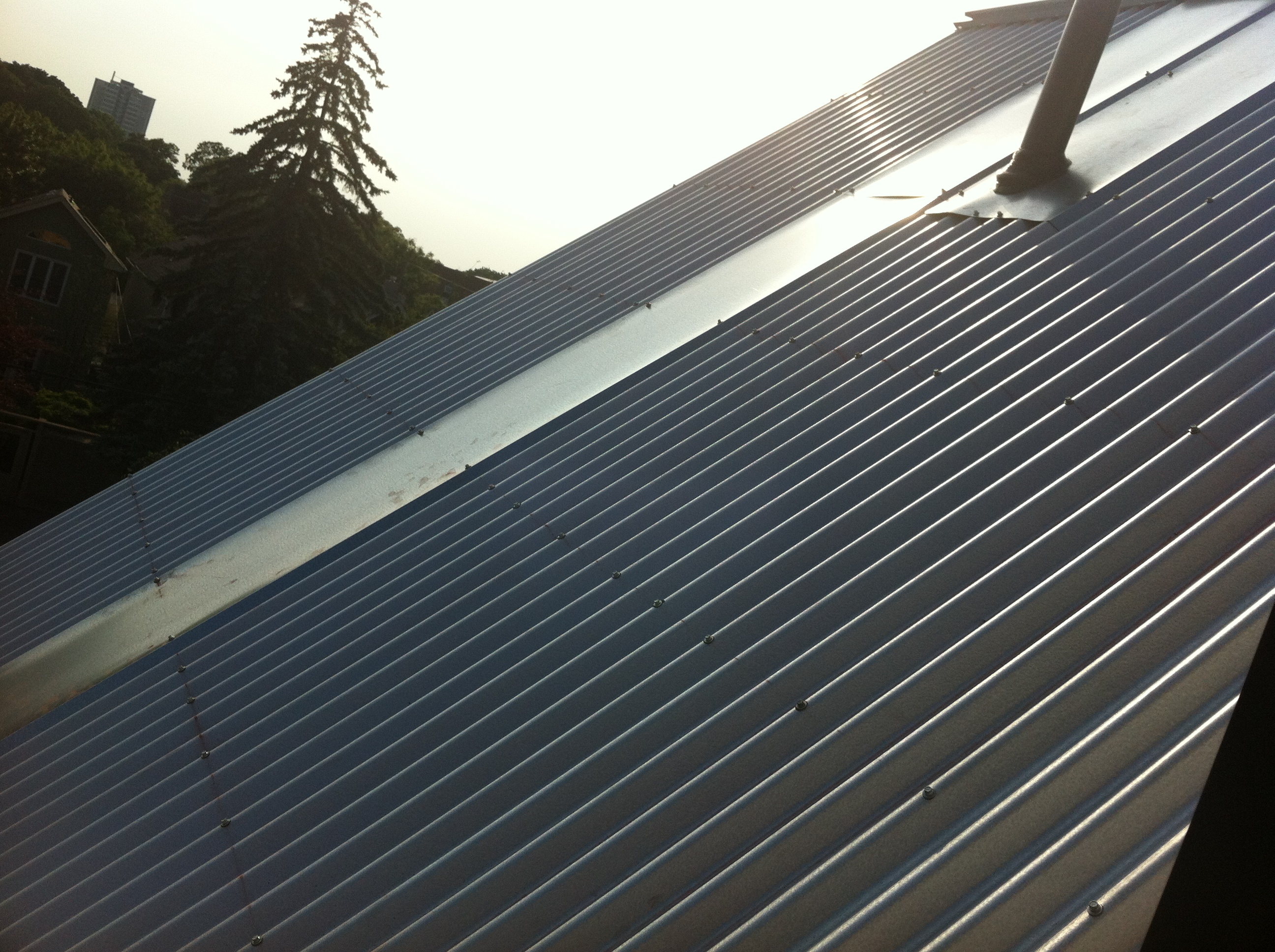New Steel
House, Renovation ·We decided to go “above and beyond” with the roof for the new house.
The standard roofing material in Toronto is a 25 year asphalt shingle applied to the roof, possibly with ice-and-water shielding tar paper underneath the shingles. The shingles can last up to 25 years, but with wind damage, one may have to make repairs as soon as 10 years. Furthermore, the shingles are in direct contact with the roof, making a conductive heat connection to the house. This connection makes it harder to heat and cool the house.
Paul our architect recommended a different approach. He prefers a metal “galvalume” roof, which has the following profile:

The ridges mean that the roof is not thermally connected to the house, and allows for air flow to vent excess heat before it gets into the house. Paul also prefers the natural metal color as it has high solar reflectivity.
We went with Paul’s recommendations, because we agreed with his reasons:
- The roof lasts for 50 years. It’s basically set it and forget it. We plan to never deal with the roof again.
- The house is thermally disconnected from the roof.
- The roof provides solar reflectivity
- This should reduce the cooling costs of the house – when combined with the improved insulation, our cooling costs should be half of what they were before the renovation.
Paul recommended we go with New Steel Roofers from Hamilton, and they came in and did an awesome job.
They started by strapping the roof on top of the ice and water shield that Tom’s crew had placed over the entire roof surface (we had ice-and-water shield on the whole roof, even though I believe it’s only required 1 metre from the edge of the roof).

They then installed the grooved Galvalume roof on top of the strapping. The roof is screwed in with lug bolts driven through the high part of the ridge.


The majority of the roof (on the gently-sloped part of the dormers and the A-Frame in the rear of the house) is done in the natural Galvalume color, for increased solar reflectivity.

In the front 1/4 of the house, that is visible from the street, we used the black metal roof. Although this is less “enviro” we thought we should keep the look of the streetscape consistent with our neighbours and the black trim details. Also visible in this shot is the Iron Grey “Hardie Board” siding that we used on the dormers. I think it looks great.

I’m looking forward to seeing the aerial shot on Google Maps with our new roof. It should be pretty distinct from the air.
The metal roof is also a great surface to install solar panels on top of, if we ever get around to that side project.
Finally, there’s the issue of the cost. This roof was about 50% more expensive ($5K more) than an asphalt roof. However, with the doubled lifespan of the roof and the reduced energy costs over the lifetime of the roof, we think we’re coming out ahead.
